Compressziós ujjak
Thigh high compression sleeves are specialized garments designed to apply pressure to the legs, particularly the thigh region, to promote better circulation and support. These sleeves are typically made from a blend of materials such as nylon, spandex, and other elastic fibers that provide both durability and flexibility. The primary purpose of these sleeves is to improve blood flow, reduce swelling, and provide support to muscles and joints.
The design of thigh high compression sleeves often features graduated compression, which means the pressure is highest at the ankle and gradually decreases as it moves up the leg. This graduated compression helps to push blood back towards the heart, thereby reducing the risk of blood pooling in the lower extremities. Additionally, some designs may include silicone bands at the top to prevent the sleeves from slipping down during activities.
Thigh high compression sleeves are recommended for a variety of conditions and activities. Individuals suffering from chronic venous insufficiency, varicose veins, or deep vein thrombosis often find relief in wearing these sleeves. They are also beneficial for athletes, particularly runners and cyclists, as they help to reduce muscle fatigue, enhance performance, and speed up recovery. People who spend long periods standing or sitting, such as healthcare workers and office employees, may also benefit from the use of compression sleeves to alleviate leg discomfort and swelling.
Overall, thigh high compression sleeves are a versatile and effective solution for improving leg health and performance. Whether for medical reasons or athletic endeavors, these sleeves offer a practical way to enhance circulation, provide support, and reduce the risk of leg-related issues. Understanding their design, material, and the various applications can help individuals make informed decisions about incorporating thigh high compression sleeves into their daily routines.
History and Evolution
Compression therapy has a long and storied history, dating back to ancient civilizations. The earliest documented use of compression garments can be traced to the Egyptians, who utilized bandaging techniques to aid in wound healing and reduce swelling. These rudimentary methods laid the foundation for the development of more sophisticated compression garments.
During the Renaissance period, advancements in medical knowledge led to more refined bandaging techniques. Physicians began to understand the benefits of applying pressure to the limbs to improve circulation and reduce edema. This period saw the introduction of elastic bandages, which offered greater flexibility and effectiveness compared to their ancient counterparts.
The 20th century marked significant advancements in compression therapy, largely due to innovations in textile technology. The development of synthetic fibers such as nylon and spandex allowed for the creation of more durable and elastic compression garments. These materials provided consistent pressure and improved comfort, making them more suitable for long-term use.
The introduction of medical-grade compression sleeves revolutionized compression therapy. These sleeves were designed to offer graduated compression, meaning the pressure was highest at the ankle and gradually decreased towards the thigh. This design helped to promote blood flow and prevent the pooling of blood in the lower extremities, a common issue in patients with venous disorders.
Modern thigh high compression sleeves represent the culmination of centuries of innovation. Today’s sleeves are made from advanced materials that offer superior breathability, moisture-wicking properties, and antimicrobial features. These enhancements not only improve the effectiveness of compression therapy but also enhance the wearer’s comfort and compliance.
Understanding the history and evolution of compression therapy provides valuable insight into the development of thigh high compression sleeves. The journey from ancient bandaging methods to modern, high-tech garments underscores the continuous pursuit of better health outcomes through innovative medical solutions.
Medical Benefits of Thigh High Compression Sleeves
Thigh high compression sleeves are medically beneficial for a variety of reasons, particularly in improving blood circulation. By applying graduated pressure on the legs, these sleeves help to ensure that blood flows efficiently back to the heart, reducing the risk of pooling in the lower extremities. This enhanced circulation can be particularly beneficial for individuals who spend long periods sitting or standing, as it helps to mitigate the risk of developing conditions related to poor blood flow.
One of the primary medical advantages of thigh high compression sleeves is their efficacy in reducing swelling, or edema. The sleeves exert a controlled amount of pressure that helps to move excess fluid out of the legs, thereby alleviating swelling. This is particularly useful for individuals suffering from chronic conditions like lymphedema, where fluid buildup can be a persistent issue. Additionally, by reducing swelling, the sleeves can also provide relief from associated discomfort and pain.
Thigh high compression sleeves play a crucial role in preventing serious medical conditions such as deep vein thrombosis (DVT) and varicose veins. DVT, which involves the formation of blood clots in deep veins, can be potentially life-threatening if not managed properly. Compression sleeves reduce the likelihood of clot formation by ensuring steady blood flow. Similarly, they help to prevent varicose veins by providing support to the vein walls, thereby stopping them from becoming distended and engorged with blood.
Post-surgical recovery is another area where thigh high compression sleeves prove to be beneficial. After surgery, patients often experience reduced mobility, which can lead to complications such as blood clots and swelling. The use of compression sleeves can mitigate these risks by promoting better circulation and reducing swelling, thereby aiding in a quicker and safer recovery. Furthermore, for those with chronic conditions like lymphedema, these sleeves can be a vital component of ongoing treatment, helping to manage symptoms and improve quality of life.
Athletic and Performance Benefits
Thigh high compression sleeves have become an essential accessory for athletes and fitness enthusiasts aiming to optimize their performance and recovery. These sleeves are designed to provide targeted compression to the thigh muscles, which can lead to numerous athletic benefits, including enhanced performance, reduced muscle soreness, and accelerated recovery times.
Firstly, thigh high compression sleeves can significantly enhance athletic performance. By applying consistent pressure to the thigh muscles, these sleeves help improve blood circulation, enabling a more efficient delivery of oxygen and nutrients to the muscles. This boost in circulation can lead to better muscle endurance and stamina, allowing athletes to perform at higher intensities for longer periods. Additionally, the warmth generated by the compression can help keep muscles limber, reducing the risk of strains and injuries during physical activities.
Secondly, the use of thigh high compression sleeves can play a crucial role in reducing muscle soreness. After intense physical activities, the muscles often experience micro-tears and inflammation, leading to delayed onset muscle soreness (DOMS). Compression sleeves help to minimize these effects by stabilizing the muscles and reducing vibrations during exercise. This stabilization reduces the amount of muscle damage incurred, leading to less soreness and discomfort post-activity.
Moreover, thigh high compression sleeves are instrumental in accelerating recovery times. The improved blood flow facilitated by the compression aids in the efficient removal of metabolic waste products like lactic acid, which accumulates during strenuous exercise. This process not only helps in quicker muscle recovery but also prepares the athlete for subsequent training sessions or competitions more rapidly.
Real-life examples and testimonials from athletes underscore these benefits. Professional runner Jane Smith credits thigh high compression sleeves for her reduced recovery times and improved race performances. Similarly, triathlete John Doe highlights the role of these sleeves in managing muscle fatigue during long-distance events.
In essence, thigh high compression sleeves offer a multi-faceted approach to enhancing athletic performance, mitigating muscle soreness, and expediting recovery. Their growing popularity among athletes is a testament to their effectiveness and the tangible benefits they provide in the realm of sports and fitness.
Choosing the Right Thigh High Compression Sleeves
Selecting the appropriate thigh high compression sleeves is crucial for ensuring both comfort and efficacy. The first aspect to consider is the compression level, which is measured in millimeters of mercury (mmHg). Compression levels typically range from mild (10-20 mmHg) to extra firm (30-40 mmHg or higher). Mild compression sleeves are suitable for general fatigue and mild swelling, while higher levels are recommended for conditions such as varicose veins or post-surgical recovery. Consulting a healthcare provider can aid in determining the most suitable compression level for specific medical conditions.
Proper sizing is another critical factor in choosing thigh high compression sleeves. Accurate measurements should be taken of the circumference of the thigh, calf, and ankle, as well as the length from the floor to the top of the thigh. Many manufacturers provide detailed sizing charts, which should be followed meticulously. Ill-fitting sleeves can result in discomfort and reduced effectiveness.
The material of the compression sleeves also plays a significant role. Common materials include nylon, spandex, and blends of both. Some sleeves are designed with moisture-wicking properties, which are beneficial for athletes or individuals who wear the sleeves for extended periods. Breathable fabrics can enhance comfort, especially in warm climates.
Specific features such as silicone bands to prevent slipping, open-toe designs, and reinforced seams can also influence the choice of compression sleeves. For those with sensitive skin, hypoallergenic materials or those with minimal seams may be preferable. Additionally, individuals engaged in different activities might require specialized sleeves. For instance, athletes might benefit from sleeves with enhanced flexibility and moisture control, while those recovering from surgery might prioritize higher compression levels and durability.
Measuring correctly for the perfect fit is essential. Measurements should be taken first thing in the morning when swelling is minimal. Use a flexible tape measure and record the circumferences at key points as well as the length of the leg. This ensures that the compression sleeves provide the intended support and therapeutic benefits.
Ultimately, the choice of thigh high compression sleeves should be tailored to individual needs, considering factors such as compression level, size, material, and specific features. By taking precise measurements and selecting the appropriate characteristics, one can optimize the benefits and comfort of wearing leg compression sleeve.
Proper Usage and Maintenance
Thigh high compression sleeves are a valuable tool for managing various medical conditions and enhancing athletic performance. To maximize their benefits, it is crucial to understand the proper usage and maintenance of these sleeves. Correctly putting on and taking off leg compression sleeve can prevent damage and ensure optimal compression.
When putting on thigh high compression sleeves, start by turning the sleeve inside out up to the heel area. Position the foot in the sleeve and gradually pull it upwards, ensuring the material is evenly distributed along the leg. Avoid bunching or twisting to maintain consistent pressure. To remove the sleeves, gently roll them down from the top, taking care not to tug or stretch the fabric excessively.
The duration for wearing thigh high compression sleeves can vary based on individual needs and medical advice. Generally, it is recommended to wear them during periods of prolonged standing or activity, and they can be worn for up to eight hours daily. However, consulting a healthcare provider for personalized guidance is advisable. Users should also be aware of any discomfort, skin irritation, or unusual symptoms and discontinue use if necessary.
Proper care and maintenance are essential to extend the lifespan and effectiveness of thigh high compression sleeves. Regular washing is necessary to remove sweat and oils that can degrade the fabric. Hand washing in lukewarm water with a mild detergent is ideal, followed by air drying. Avoid using bleach, fabric softeners, or placing them in the dryer, as these can compromise the elasticity and compression properties.
Storing the sleeves correctly is also important. Keep them in a cool, dry place away from direct sunlight to prevent material deterioration. Regularly inspect the sleeves for signs of wear, such as thinning fabric or loss of elasticity, and replace them as needed to ensure continuous support.
By following these guidelines for proper usage and maintenance, users can ensure that their thigh high compression sleeves remain effective and durable, providing the necessary support and comfort over time.
Gyakori mítoszok és tévhitek
Thigh high compression sleeves are often surrounded by a myriad of myths and misconceptions that can deter potential users. One prevalent belief is that these sleeves are inherently uncomfortable. Contrary to this notion, modern leg compression sleeve are designed with advanced materials that prioritize comfort and breathability. They are tailored to provide a snug, yet comfortable fit, making them suitable for extended wear. Proper sizing and quality materials ensure that users do not experience discomfort, thus debunking the myth of inherent discomfort.
Another common misconception is that thigh high compression sleeves are exclusively for older adults. While it is true that older individuals can benefit significantly from them, these sleeves are equally advantageous for younger demographics. Athletes, for instance, use leg compression sleeve to enhance performance and support recovery. People of all ages, including those with occupations that involve prolonged standing or sitting, can benefit from the improved circulation and reduced muscle fatigue provided by these sleeves.
Additionally, there is a false belief that thigh high compression sleeves are not effective for specific conditions. In reality, these sleeves are versatile and beneficial for a range of medical and non-medical situations. They are commonly recommended for conditions such as varicose veins, deep vein thrombosis, and lymphedema. Moreover, they aid in the recovery process post-surgery and help prevent sports-related injuries. The effectiveness of leg compression sleeve is well-documented across various health and wellness disciplines.
By addressing these myths and misconceptions, it becomes evident that thigh high compression sleeves are a valuable tool for a diverse group of users. They are designed for comfort, used by people of varying ages, and effective for a multitude of conditions. Understanding these facts can help individuals make informed decisions about incorporating leg compression sleeve into their health and wellness routines.
Testimonials and Case Studies
Thigh high compression sleeves have garnered positive reviews from a diverse group of users, each with their unique success stories. These testimonials and case studies highlight the broad utility and significant benefits derived from consistent use of leg compression sleeve across various scenarios.
John, a 45-year-old marathon runner, shared his experience of dealing with chronic leg fatigue and soreness. After incorporating thigh high compression sleeves into his training regimen, he noticed a substantial reduction in muscle fatigue, allowing him to extend his training sessions without experiencing the usual discomfort. John emphasizes how the enhanced blood flow facilitated by the compression sleeves has not only improved his performance but also accelerated his recovery times.
Another compelling case is that of Maria, a 32-year-old office worker who spends long hours seated at her desk. She struggled with poor circulation and the resultant swelling in her legs. Maria decided to give thigh high compression sleeves a try, and within weeks, she observed a marked improvement in her symptoms. The consistent pressure from the sleeves helped alleviate her swelling and discomfort, making her workdays more comfortable and productive.
For athletes like Lisa, a professional basketball player, the sleeves have been a game-changer. Lisa credits the compression sleeves for her reduced muscle cramps and enhanced endurance during matches. The sleeves provide the necessary support and stability, reducing the risk of injuries and allowing her to maintain peak performance throughout the game.
These real-life examples underscore the practical benefits of thigh high compression sleeves beyond mere theoretical advantages. Whether it’s for athletic performance, long hours of sedentary work, or recovery from physical exertion, these sleeves have proven to be an invaluable tool for many. The positive outcomes experienced by individuals like John, Maria, and Lisa serve as a testament to the efficacy of thigh high compression sleeves, encouraging others to explore their potential benefits.

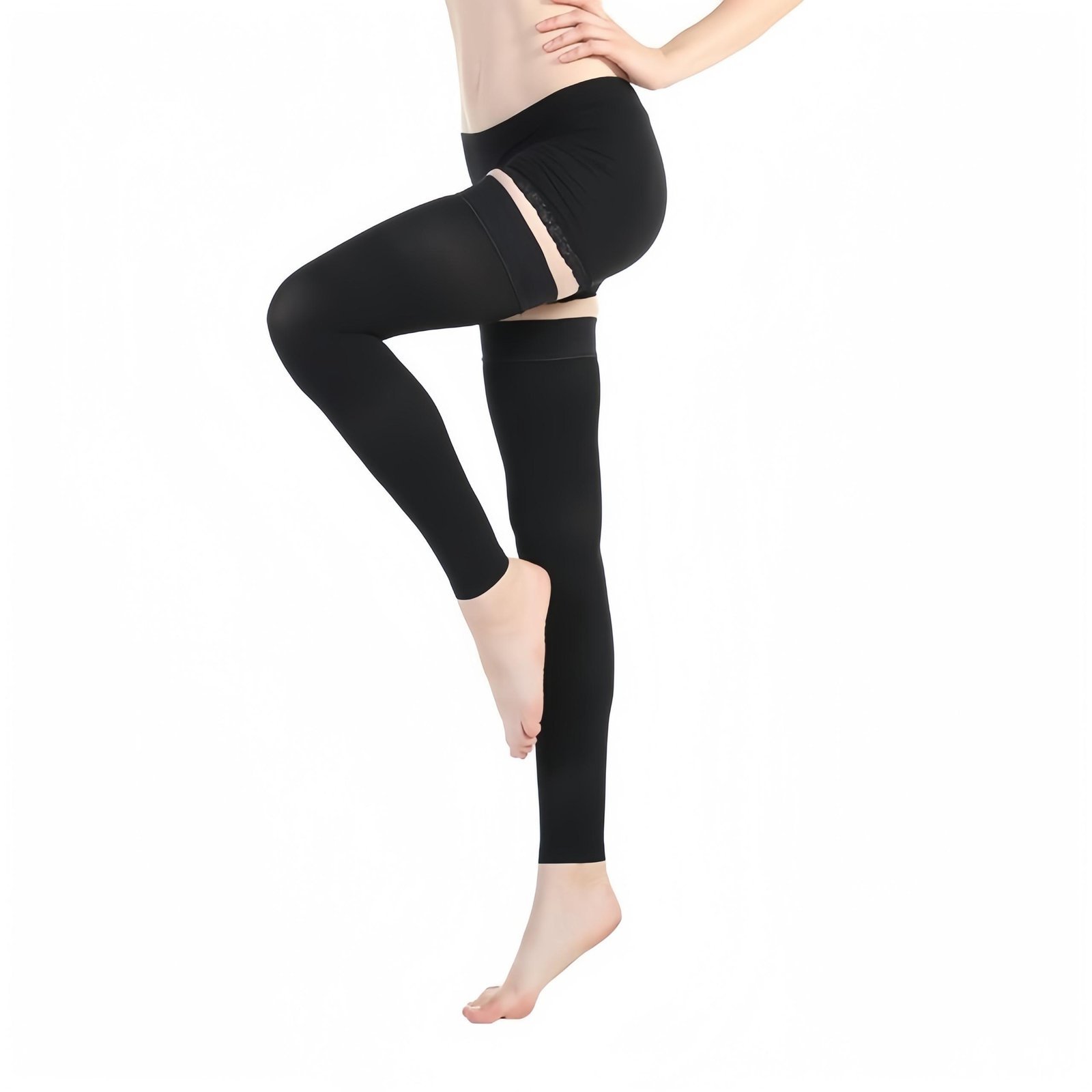



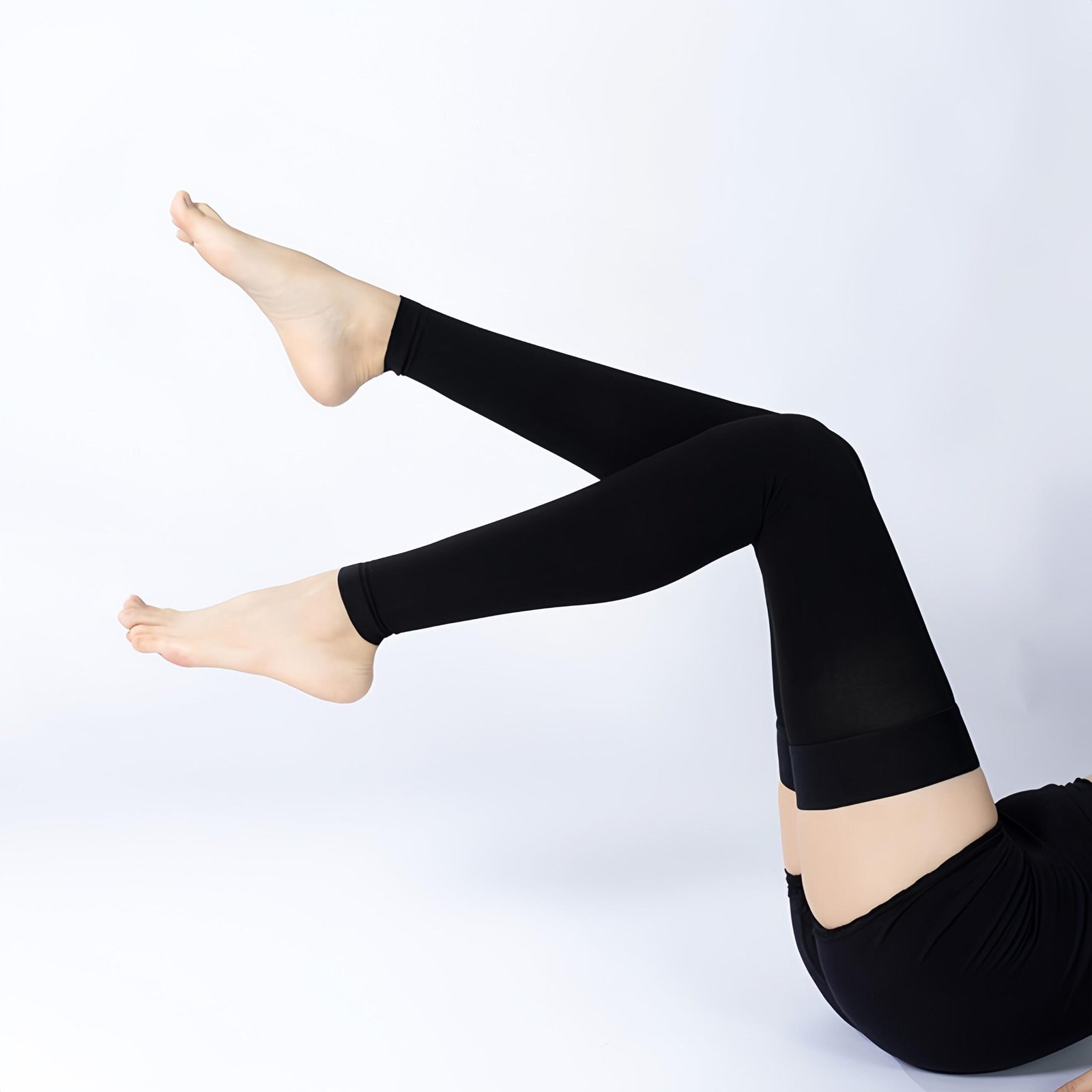
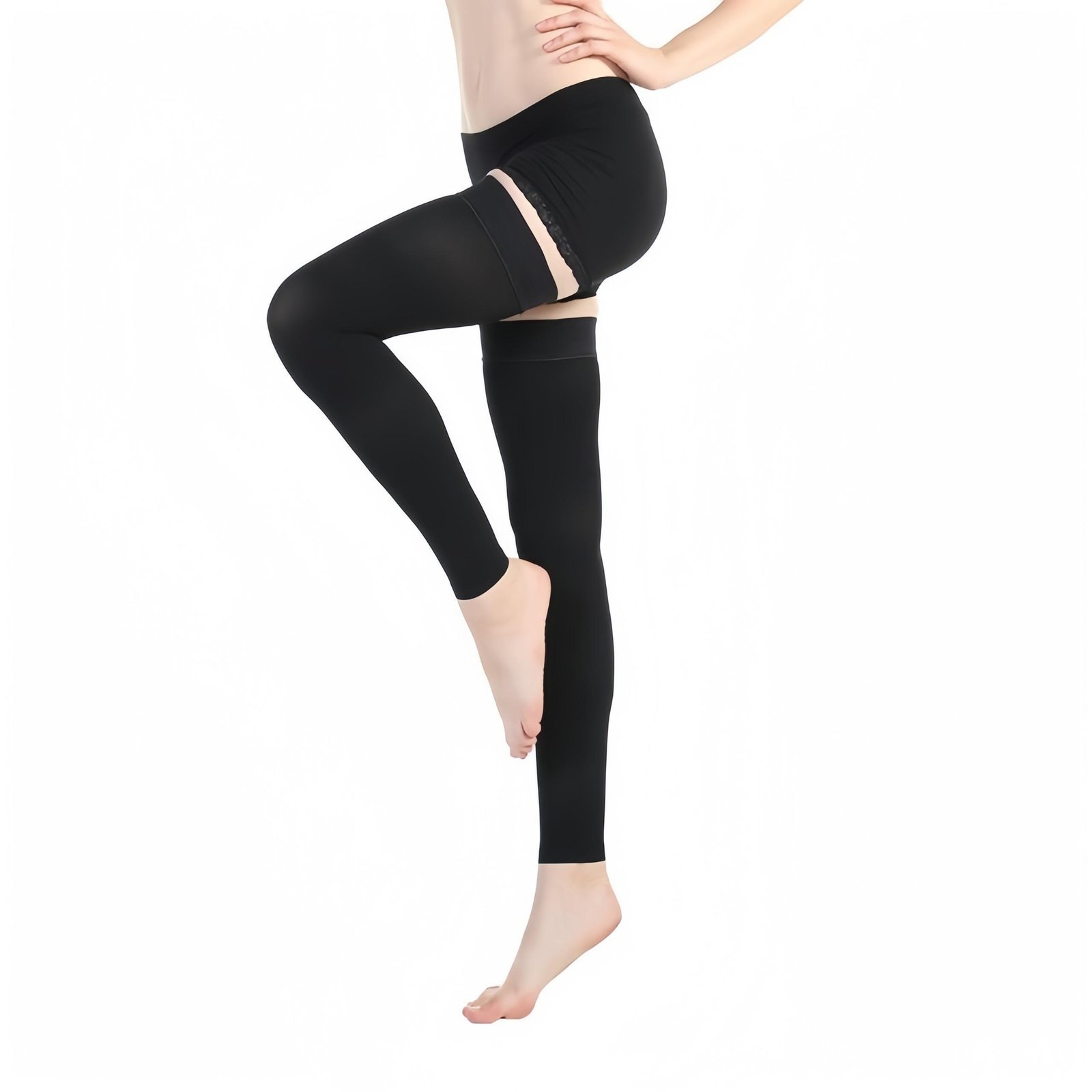
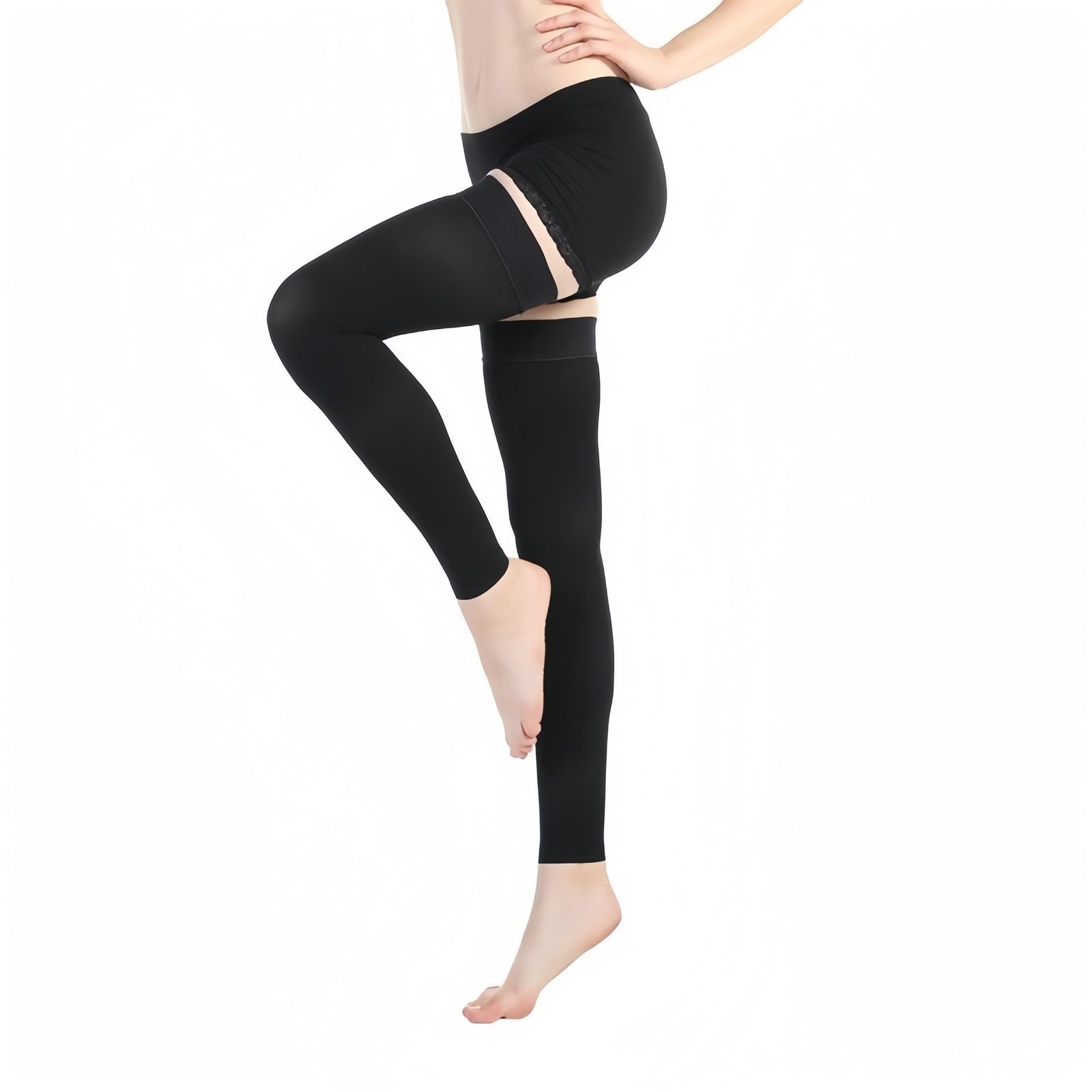
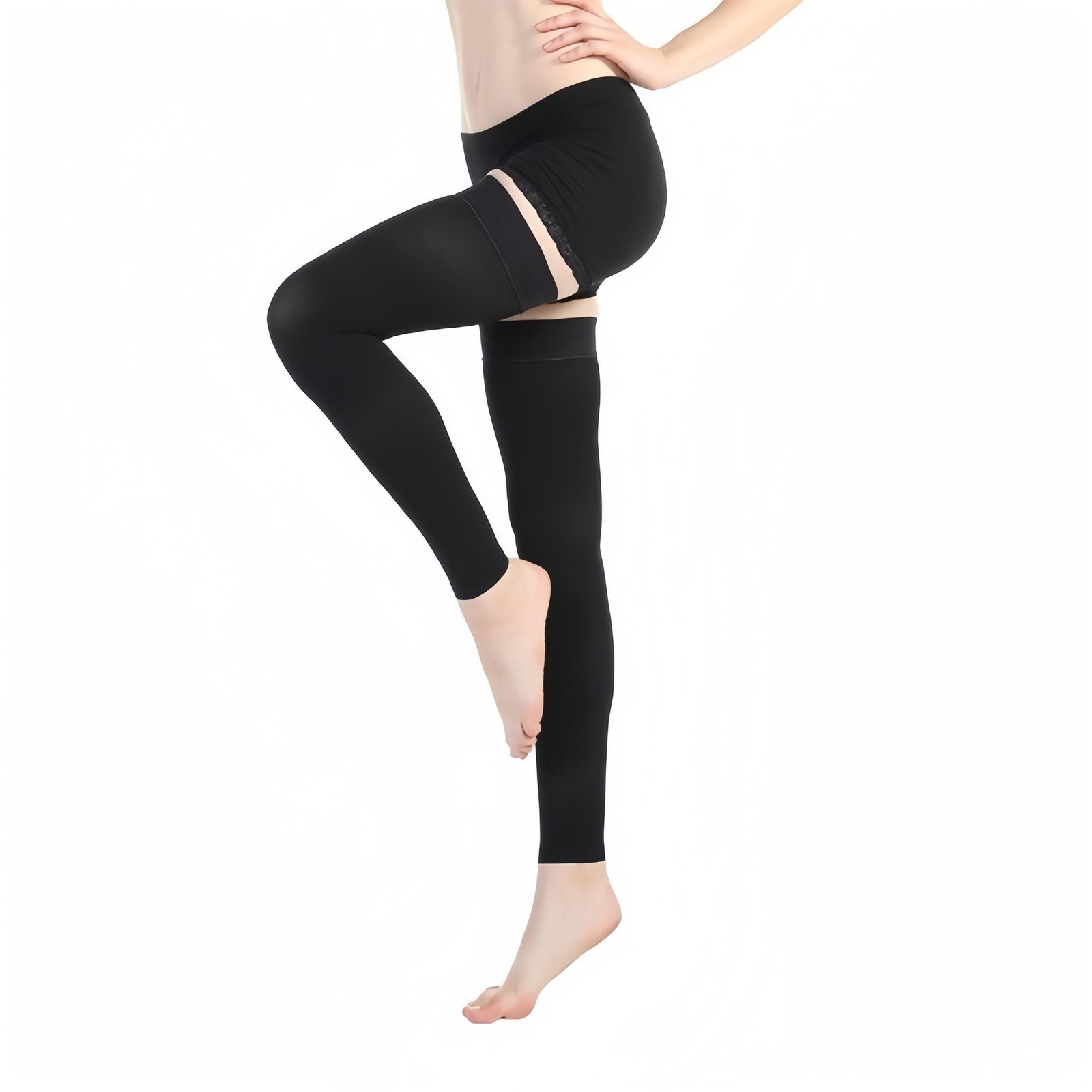


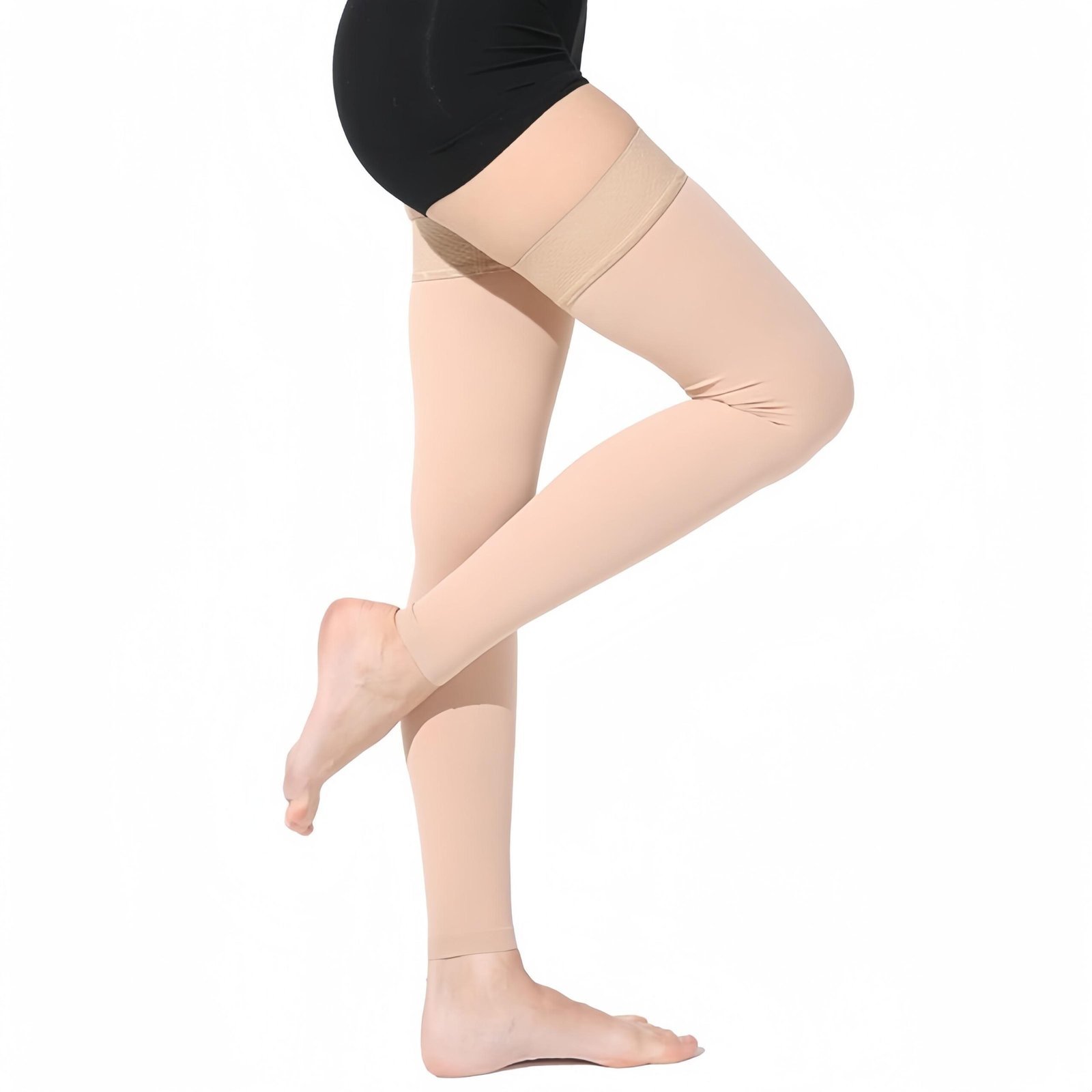
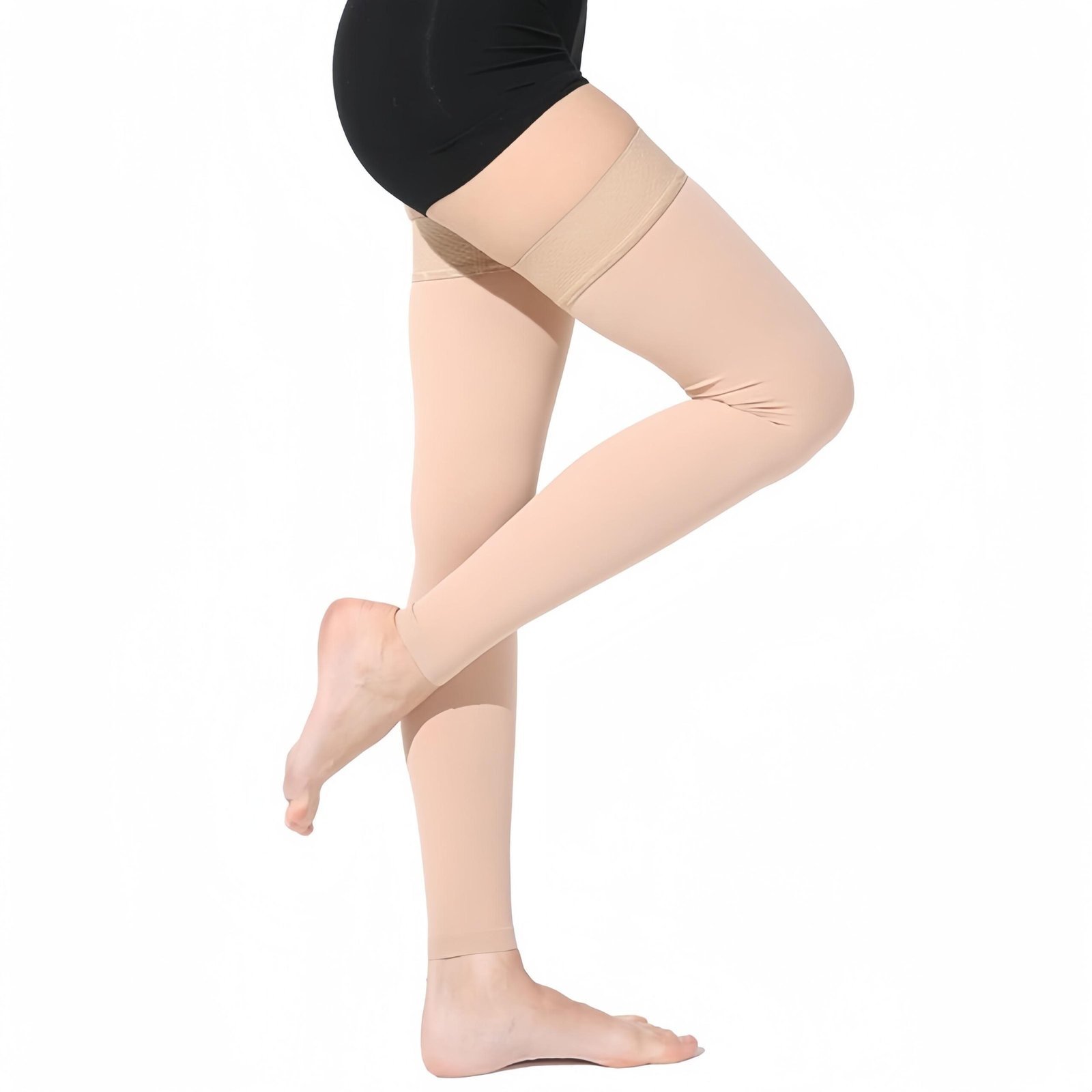

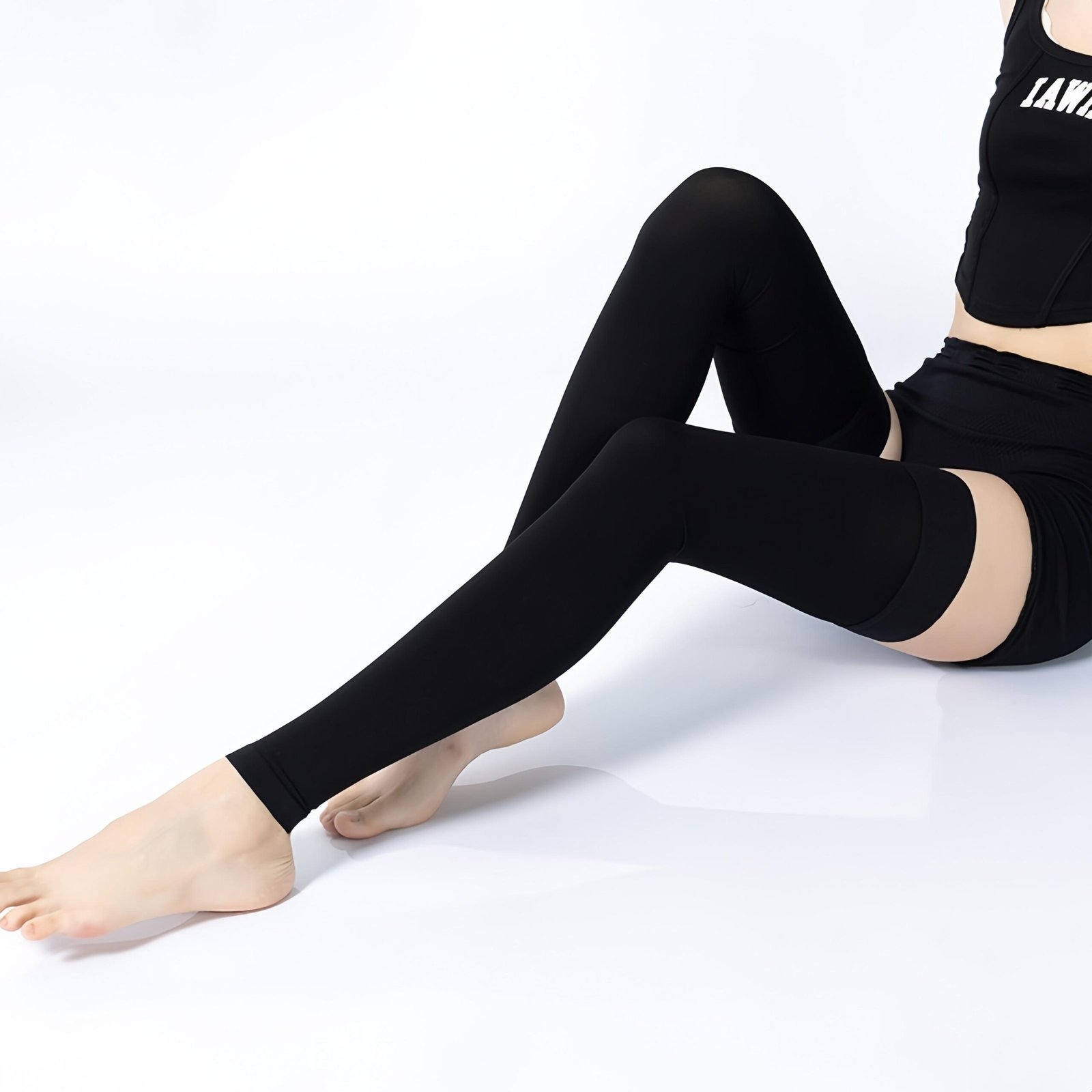
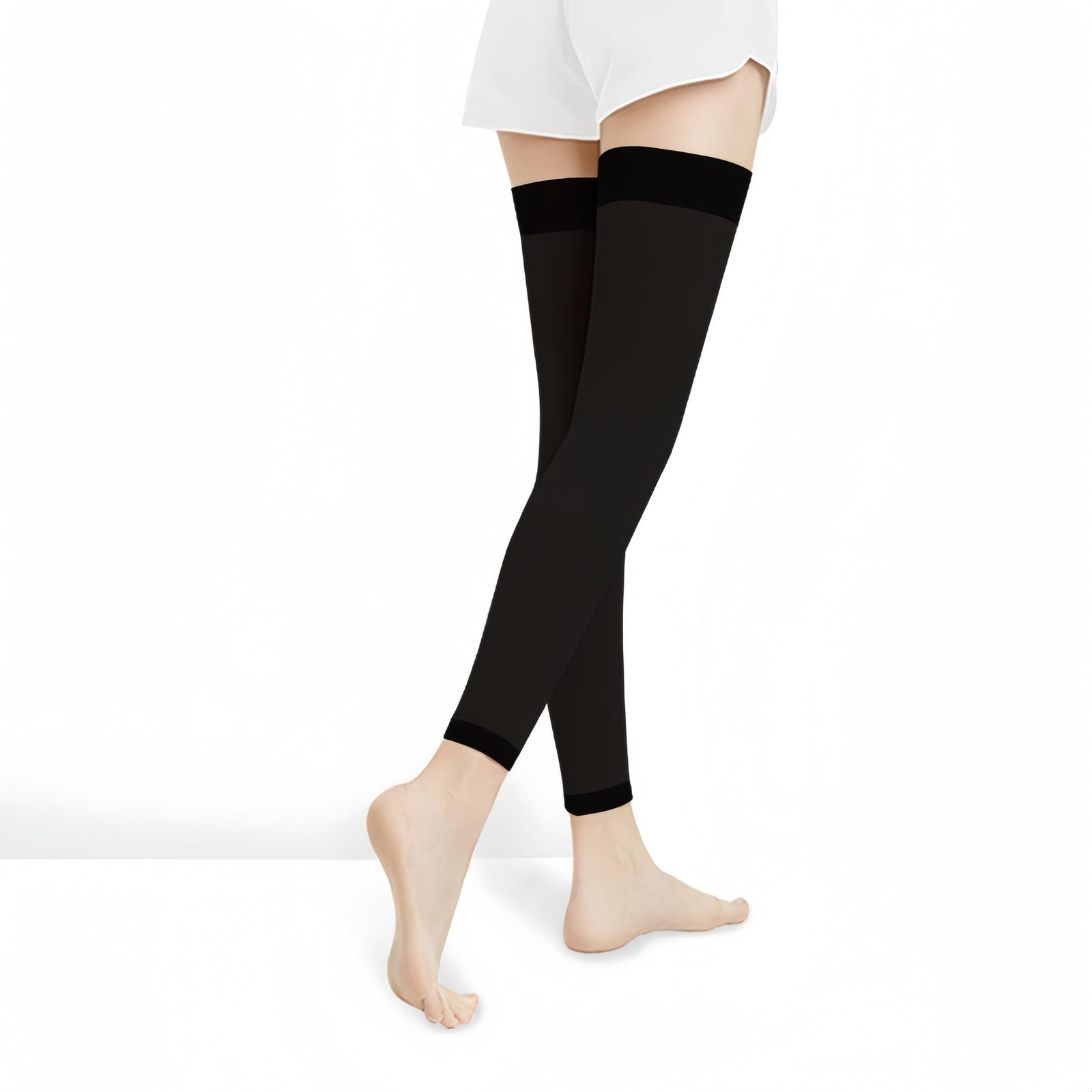

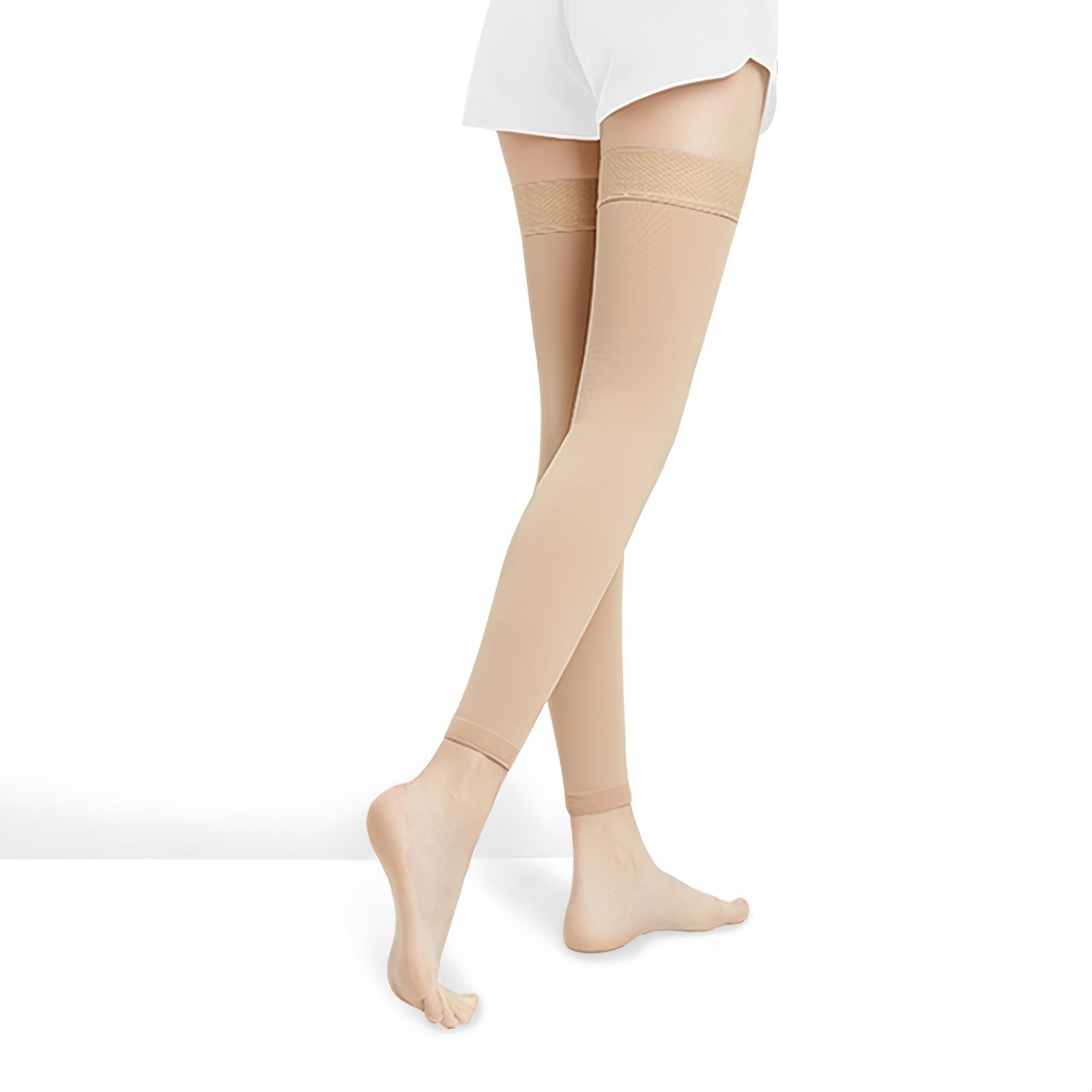
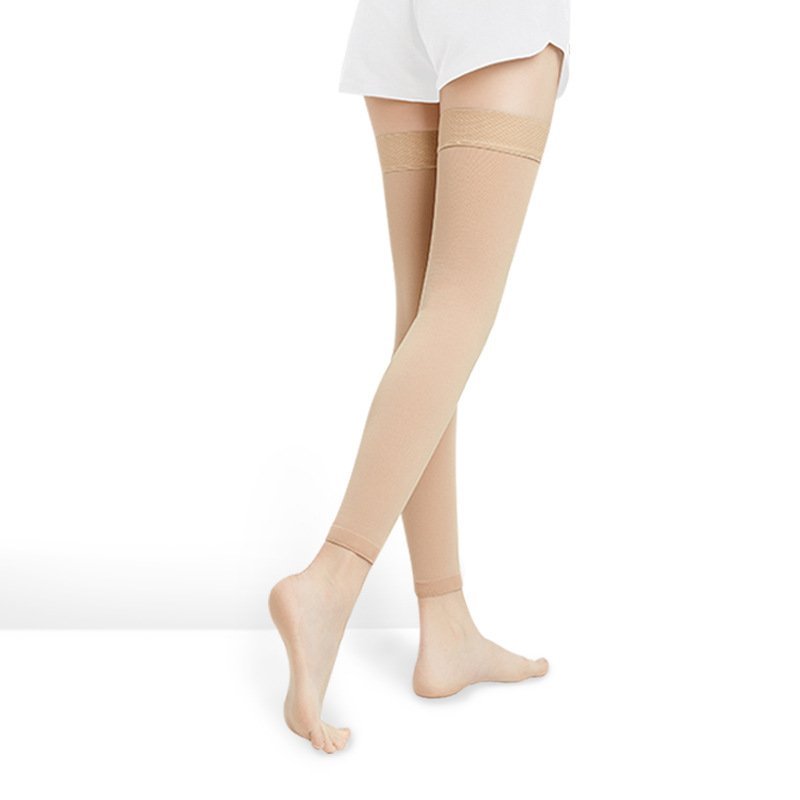

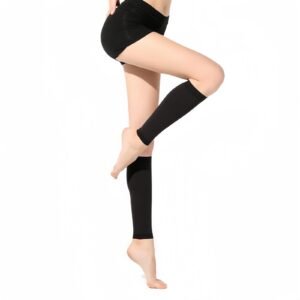


Értékelések
Még nincsenek értékelések.